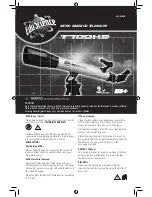
Celestial Observing • 41
Star hopping may take some getting used to since you can see more stars
through the finder than you can see with the naked eye. And, some objects
are not visible in the finder. One such object is M57, the famed Ring Nebula.
Here’s how to find it:
1.
Find the constellation of Lyra, a small parallelogram visible in the summer
and fall months. Lyra is easy to pick out because it contains the bright
star Vega.
2.
Start at the star Vega — Alpha (
α
) Lyrae — and move a few degrees
southeast to find the parallelogram. The four stars that make up this
geometric shape are all similar in brightness, making them easy to see.
3.
Locate the two southern most stars that make up the parallelogram —
Beta (
β
) and Gamma (
γ
) Lyrae (see figure 6-3).
4.
Point the finder half way between these two stars.
5.
Move about 1/2° toward Beta (
β
) Lyrae, but remaining on a line that
connects the two stars.
6.
Look through the telescope and the Ring Nebula should be in the tele-
scope. Its angular size is quite small and, therefore, not visible in the
finder.
These two examples should give you an idea of how to star hop to deep sky
objects. To use this method on other objects, consult any of the star atlases
listed at the end of this book.
Figure 6-3
Although the Ring Nebula lies
between two naked eye stars,
it may take a little time to
locate since it is not visible in
the finder. Note that the scale
for this star chart is different
from the one on the previous
page which shows several
constellations including
Pegasus, Triangulum, and
Andromeda.









































